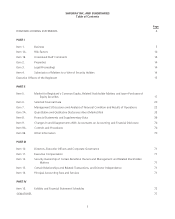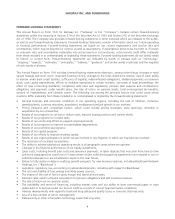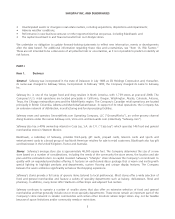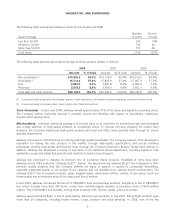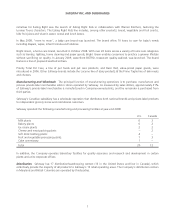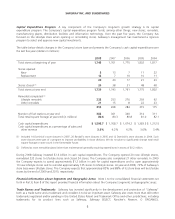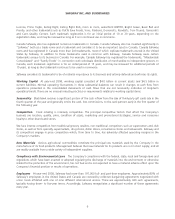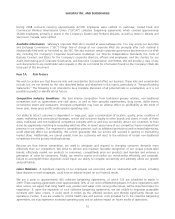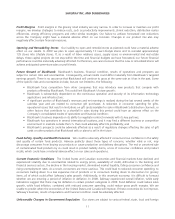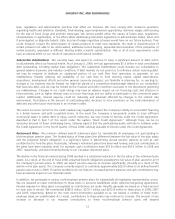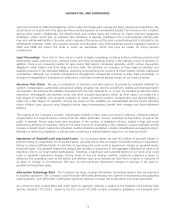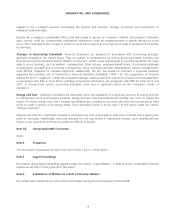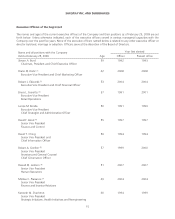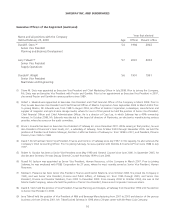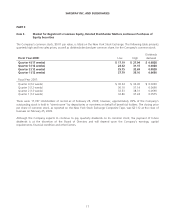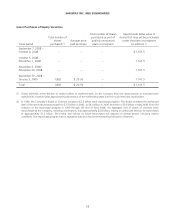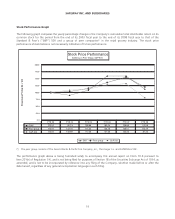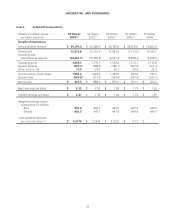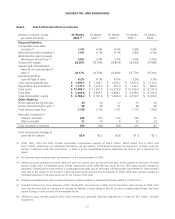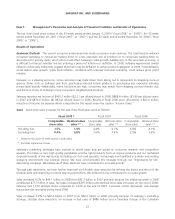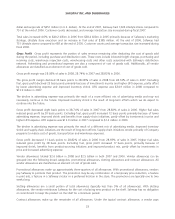Safeway 2008 Annual Report Download - page 33
Download and view the complete annual report
Please find page 33 of the 2008 Safeway annual report below. You can navigate through the pages in the report by either clicking on the pages listed below, or by using the keyword search tool below to find specific information within the annual report.SAFEWAY INC. AND SUBSIDIARIES
upon the outcome of collective bargaining, actions taken by trustees who manage the plans, government regulations, the
actual return on assets held in the plans and the potential payment of a withdrawal liability if we choose to exit a market,
among other factors. Additionally, the benefit levels and related issues will continue to create collective bargaining
challenges. Under current law, an employer that withdraws or partially withdraws from a multi-employer pension plan
may incur withdrawal liability to the plan, which represents the portion of the plan’s underfunding that is allocable to the
withdrawing employer under very complex actuarial and allocation rules. Multi-employer pension legislation passed in
2006 and 2008 will impact the funds in which we participate, which may have an impact on future pension
contributions.
Legal Proceedings From time to time, we are a party to legal proceedings, including matters involving personnel and
employment issues, personal injury, antitrust claims and other proceedings arising in the ordinary course of business. In
addition, there is an increasing number of cases being filed against companies generally, which contain class-action
allegations under federal and state wage and hour laws. We estimate our exposure to these legal proceedings and
establish reserves for the estimated liabilities. Assessing and predicting the outcome of these matters involves substantial
uncertainties. Although not currently anticipated by management, unexpected outcomes in these legal proceedings, or
changes in management’s evaluations or predictions, could have a material adverse impact on our financial results.
Insurance Plan Claims We use a combination of insurance and self-insurance to provide for potential liabilities for
workers’ compensation, automobile and general liability, property risk, director and officers’ liability and employee health
care benefits. We estimate the liabilities associated with the risks retained by us, in part, by considering historical claims
experience, demographic and severity factors and other actuarial assumptions which, by their nature, are subject to a
high degree of variability. Any actuarial projection of losses concerning workers’ compensation and general liability is
subject to a high degree of variability. Among the causes of this variability are unpredictable external factors affecting
future inflation rates, discount rates, litigation trends, legal interpretations, benefit level changes and claim settlement
patterns.
The majority of the Company’s workers’ compensation liability is from claims occurring in California. California workers’
compensation has received intense scrutiny from the state’s politicians, insurers, employers and providers, as well as the
public in general. Recent years have seen escalation in the number of legislative reforms, judicial rulings and social
phenomena affecting our business. Some of the many sources of uncertainty in the Company’s reserve estimates include
changes in benefit levels, medical fee schedules, medical utilization guidelines, vocation rehabilitation and apportionment.
Reversals of reforms by legislation or judicial action could have a material adverse impact on our financial results.
Impairment of Goodwill and Long-Lived Assets On our balance sheet, we have $2.4 billion of goodwill subject to
periodic testing for impairment. Our long-lived assets, primarily stores, also are subject to periodic testing for impairment.
Failure to achieve sufficient levels of cash flow at reporting units could result in impairment charges on goodwill and/or
long-lived assets. Our goodwill impairment analysis also includes a comparison of the aggregate estimated fair value of all
reporting units to our total market capitalization. Therefore, a significant and sustained decline in our stock price could
result in goodwill impairment charges. During times of financial market volatility, significant judgment is given to
determine the underlying cause of the decline and whether stock price declines are short-term in nature or indicative of
an event or change in circumstances. We have incurred significant impairment charges to earnings in the past for
goodwill and long-lived assets.
Information Technology Risks The Company has large, complex information technology systems that are important
to business operations. The Company could encounter difficulties developing new systems or maintaining and upgrading
existing systems. Such difficulties could lead to significant expenses or losses due to disruption in business operations.
As a merchant who accepts debit and credit cards for payment, Safeway is subject to the Payment Card Industry Data
Security Standard (“PCI DSS”), issued by the PCI Council. PCI DSS contains compliance guidelines and standards with
13


